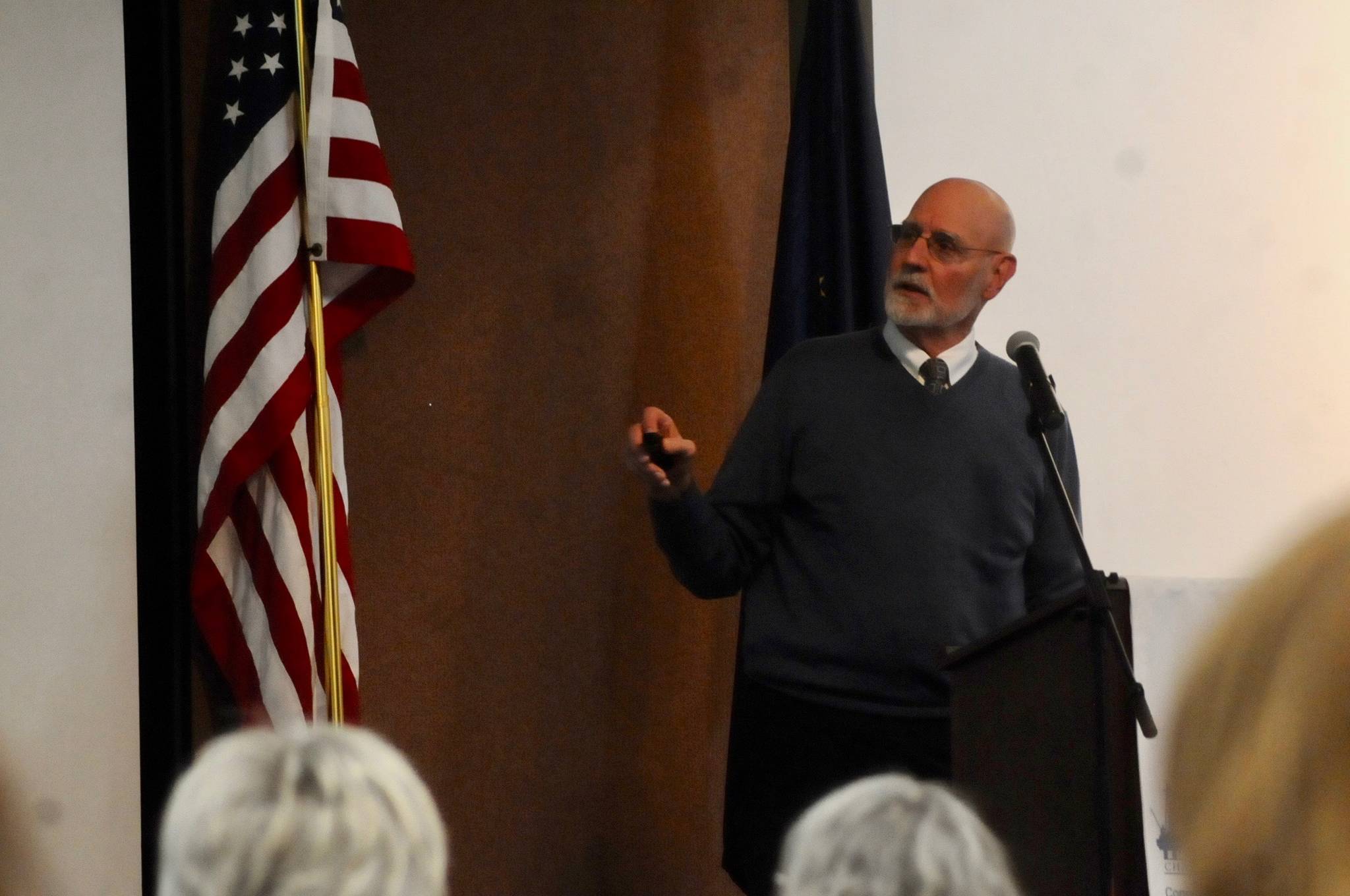The Pebble Limited Partnership is changing its plans and its tone as it continues its permitting process.
The Pebble Mine, a gold, copper and molybdenum mine proposed for the Bristol Bay region in southwestern Alaska, has been one of the most controversial resource development projects in the state. Bristol Bay fishermen and environmental activists statewide have raised concerns about the mine’s potential impacts on the salmon streams in the region, one of the most productive wild sockeye salmon fisheries in the world. Proponents have argued that it would bring jobs to a rural area without many other economic development projects and revenue to the state as well as provide metals for products like electronics and hardware.
At first, Pebble was proposing an open-pit mine stretched over several waterways near Lake Iliamna and Lake Clark, with a trucking road around the north end of Lake Iliamna to a deep water shipping terminal on Cook Inlet. Opponents objected to the size of the mine, plans to dam streams and potential contamination to downstream fish stocks.
In December 2017, the project leaders applied to the U.S. Army Corps of Engineers with a scaled-back project and a number of operating changes. The new plans are meant to help address concerns in the public, said Mark Hamilton, Pebble’s vice president of external affairs, at a joint luncheon of the Kenai and Soldotna chambers of commerce Wednesday.
“The first trick was to make it smaller,” he said. “Why? There’s less wetland impact, fewer streams you have to worry about, less tailings from the process.”
The new plans call for an approximately 50 percent smaller mine plan and an ice-breaking ferry to cross Lake Iliamna with the ore instead of a road to go around. The ferry is based on several other operations in Canada. Pebble project leaders are still exploring logistics on how it would work around indigenous use and wildlife, Hamilton said. However, using the ferry would help reduce wetland impacts and stream crossings, he said.
“This cuts by at least half and in some cases 2/3 of the wetland impact, the necessary stream crossings with culverts, the number of bridges,” he said. “It really is a pretty brilliant plan.”
The ore would go out to a port near Amakdedori Creek, which drains into Cook Inlet’s Kamishak Bay. The project would require about 700 feet of dredging for the heavy barges to come in and out, Hamilton said. The ships would likely come and go once every two weeks on their way to foreign smelting facilities.
Power infrastructure will be a big part of the project — about 230 megawatts. The method of extraction and refining the mine will use a lot of power, so the project designers plan to build a natural gas-fired power generation facility to serve the site. The current plan is to build a pipeline running under Lake Iliamna and Cook Inlet to connect to gas delivery pipelines on the Kenai Peninsula, though as the project is evaluated through the permitting system, that could change, Hamilton said.
“Our best plan is the one that I’ve given you,” he said. “Doesn’t mean the two agencies evaluating it will agree.”
The first time the project planners pitched the mine to Alaskans, they took a more “arrogant” tone, Hamilton said. This time around, the leadership has changed — Tom Collier, a former U.S. Department of the Interior chief of staff, is now the CEO for the Pebble Limited Partnership and has helped redesign the project with the intention of addressing environmental concerns. The goal is to build “the most environmentally friendly mine in the world,” Hamilton said.
The smaller design would have an impact on revenues, he said. The current plan is for the mine to run continuously for 20 years with the possibility of extension beyond that. Annually, the planners estimate it would bring $19 million–$21 million to the Lake and Peninsula Borough in taxes and $49 million–$66 million to the state, Hamilton said. The mine would directly employ between 750 and 1,000 people, with other jobs associated in support and construction before the mine opens. Those numbers are smaller than the original projects for economic impact.
Opponents have taken issue with the new plans, including concerns about the port interfering with salmon and marine mammals in Cook Inlet, the tailings facility blocking salmon streams and concern about the filling of wetlands and streams. Bristol Bay Native Corporation, the Alaska Native regional corporation that covers much of Southwest Alaska, has formally opposed Pebble Mine because the mine at any economically feasible size would pose a risk to salmon runs. Fishing groups such as Trout Unlimited and fishing gear company Orvis have also come out against the mine, calling for people to oppose it.
Hamilton said the increasing demand for electronics drives the need for the minerals Pebble will be extracting, and that were the mine built elsewhere, other countries might not have environmental regulations as strong as the United States’ laws.
“People assume that the mine and the fishery need to be opponents,” he said. “We need both of those industries. Both of them can coexist. It’s on our dime to prove that it we’re not going to mess with that fishery, and we’re not.”
The U.S. Army Corps of Engineers is hosting a number of public scoping meetings in villages in the Bristol Bay region as part of the Environmental Impact Statement process to gather information about the type of issues analyzed in the EIS and project impacts. Individuals can review the permit documents and submit scoping comments to the U.S. Army Corps of Engineers at pebbleprojecteis.com.
Reach Elizabeth Earl at eearl@peninsulaclarion.com.

